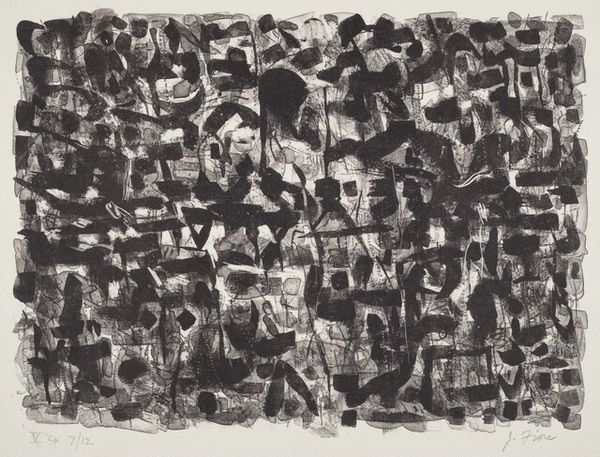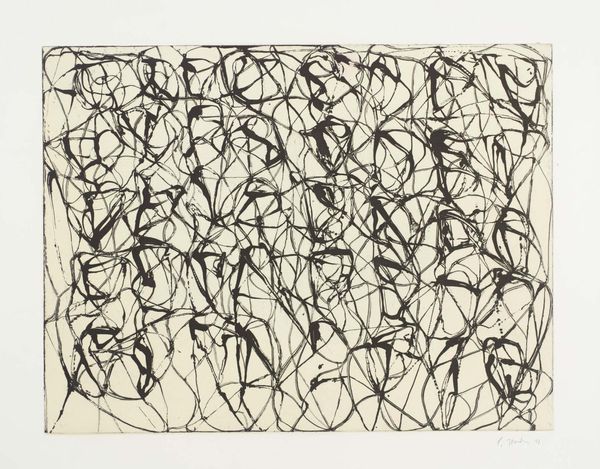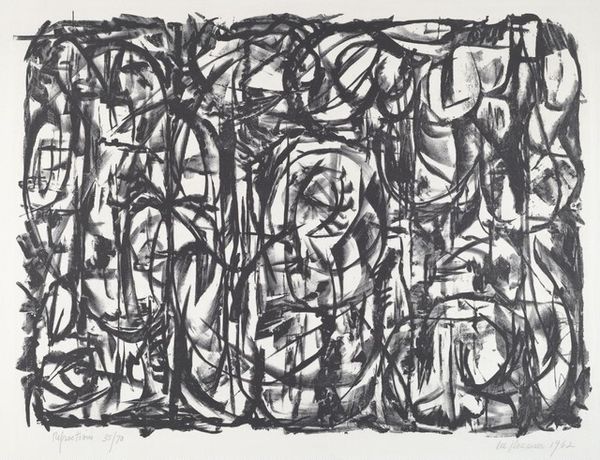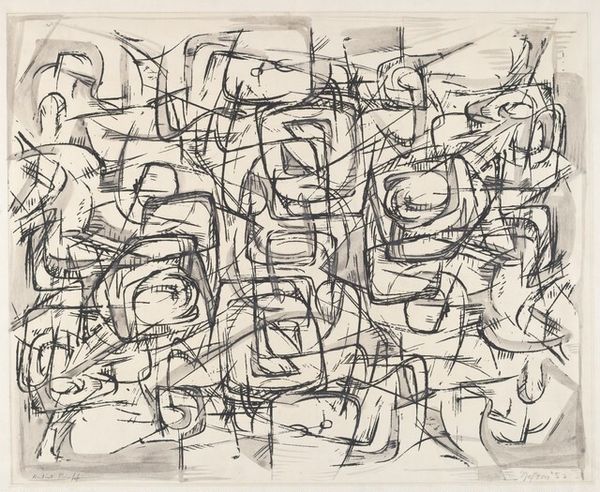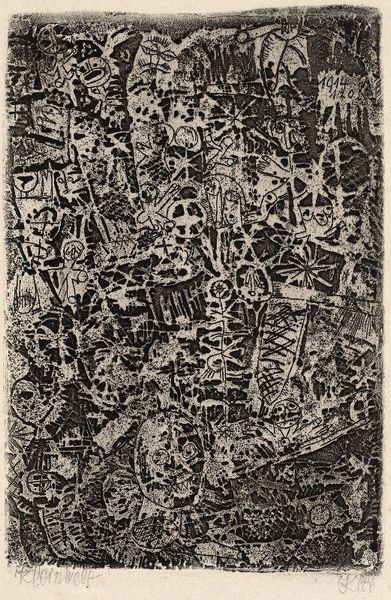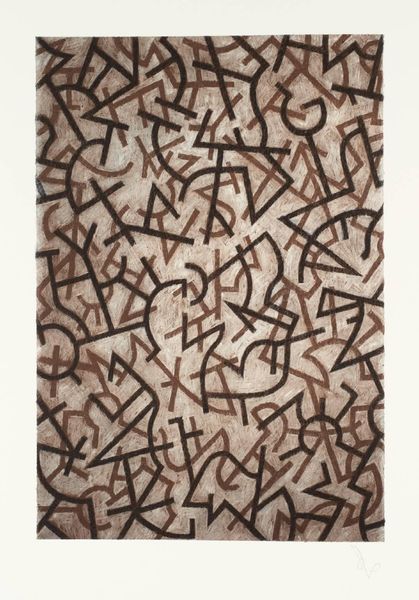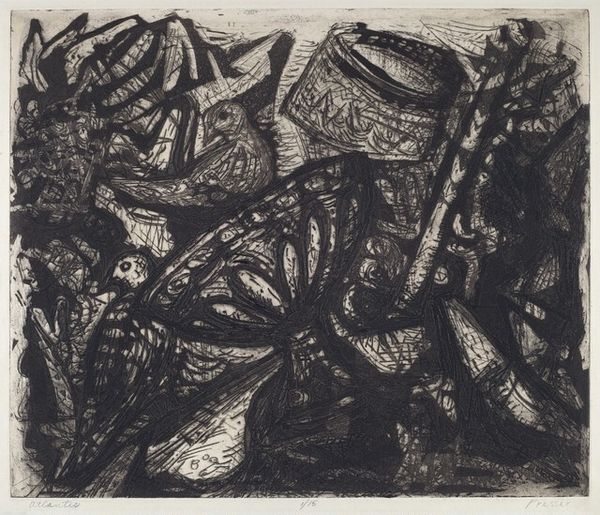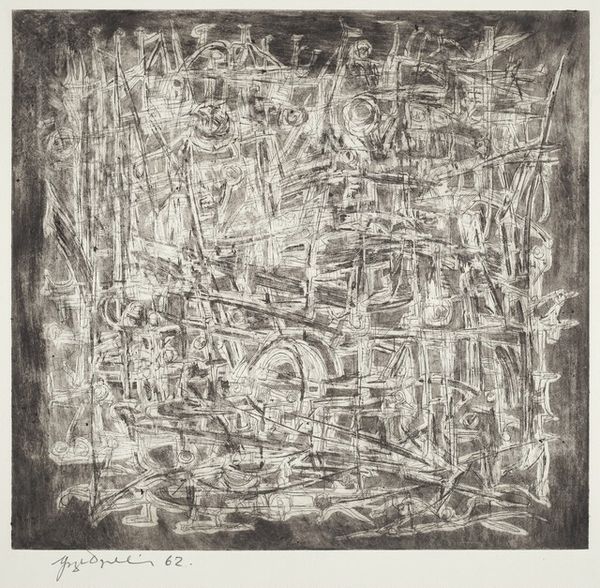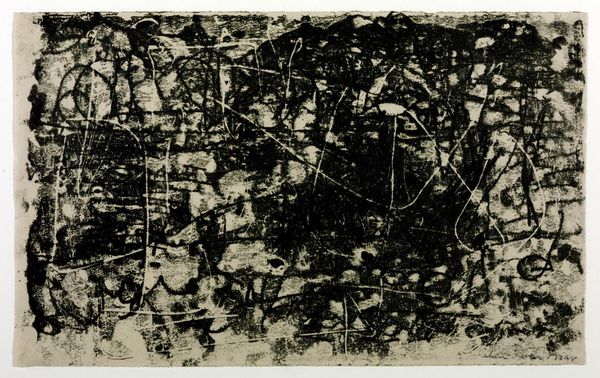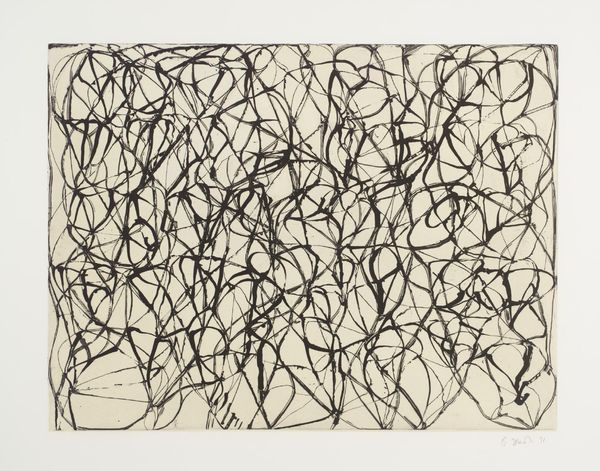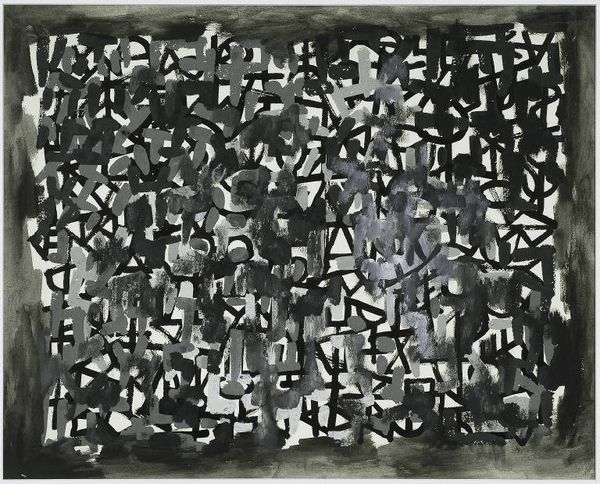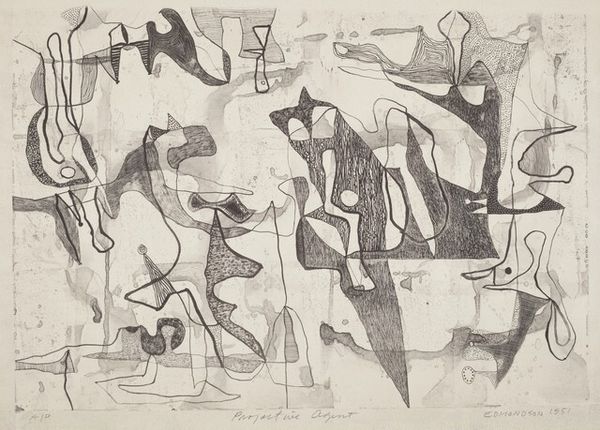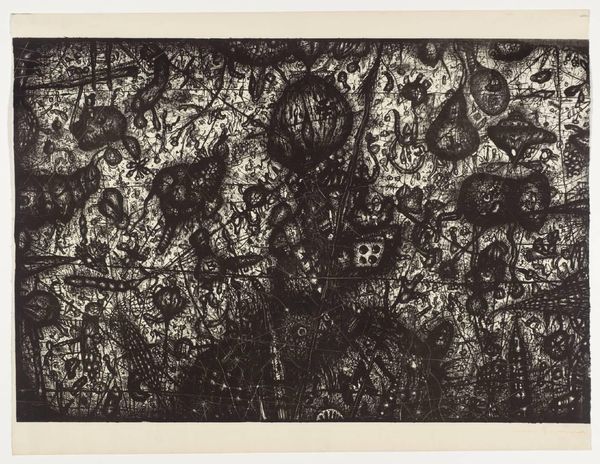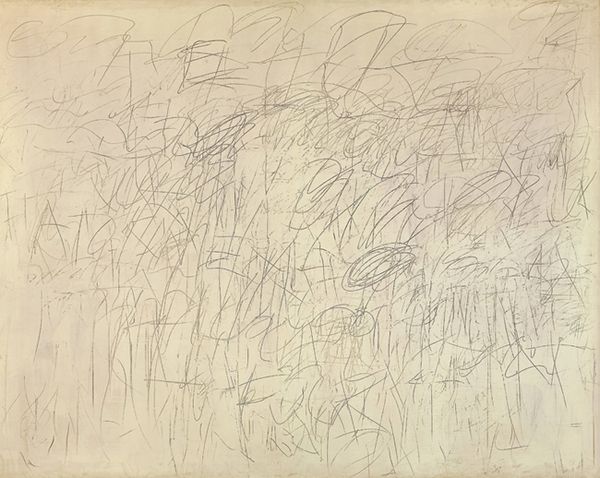
drawing, ink
#
abstract-expressionism
#
drawing
#
pen drawing
#
ink
#
art-informel
#
abstraction
#
line
Dimensions: 23.4 x 30.7 cm
Copyright: Pierre Alechinsky,Fair Use
Curator: Oh, I'm instantly pulled in! It's like staring into the inky depths of midnight, but instead of stars, there's this swirling constellation of abstract forms. Makes me want to decipher some cosmic message hidden there. Editor: And that's quite fitting, given we're looking at "The Night", a 1952 pen and ink drawing by Pierre Alechinsky, currently residing here at the Tate Britain. The piece is a whirlwind of lines and shapes against a dark background. Alechinsky was associated with Art Informel, which valued spontaneity, a liberation from formal constraint that emerged from the post-war anxiety. Curator: Ah, yes, that post-war sensibility! I can feel it. Like a collective breath held, and then released in a torrent of expression. You mentioned spontaneity, and the density of linework really strikes me; it feels feverish, almost manic. Editor: Absolutely. This frantic quality makes sense, given Alechinsky's involvement with the COBRA group. Founded in 1948, the artists wanted to reject a "rational" approach to painting; in search of new ways of expression that tapped into the unconscious mind. Curator: Like dreamscapes bleeding onto the page! Looking closely, I can almost discern faces, maybe symbols... though they dissolve again in the flurry of ink. It mirrors my own experience of insomnia, trying to grasp thoughts as they flutter and escape in the darkness. Is that a purely subjective read or does Alechinsky's life offer any clues about how he was experiencing these so called dreamscapes? Editor: You know, while he often resisted explicit interpretations, his practice in the 1950's was heavily informed by psychological theories such as surrealist automatism - writing and drawing with very little self control. Furthermore, he began to experiment with surrealist themes around theatre and play acting that tapped into how he was beginning to express himself following World War 2. These influences speak to the way unconscious anxieties or emotions came out as art in the form of these dreamscapes as you call them. Curator: It's the visual equivalent of jazz, I think – intuitive riffs building into this complex composition. Editor: I think I agree. It reminds me that art doesn't always need to provide answers; sometimes, it's most powerful when it captures the very act of searching, the struggle to articulate what lurks beneath the surface. Curator: So true! Thanks for illuminating this little window into Alechinsky's night, I am beginning to be able to put some words onto my previous emotion about cosmic secrets!
Comments
No comments
Be the first to comment and join the conversation on the ultimate creative platform.
